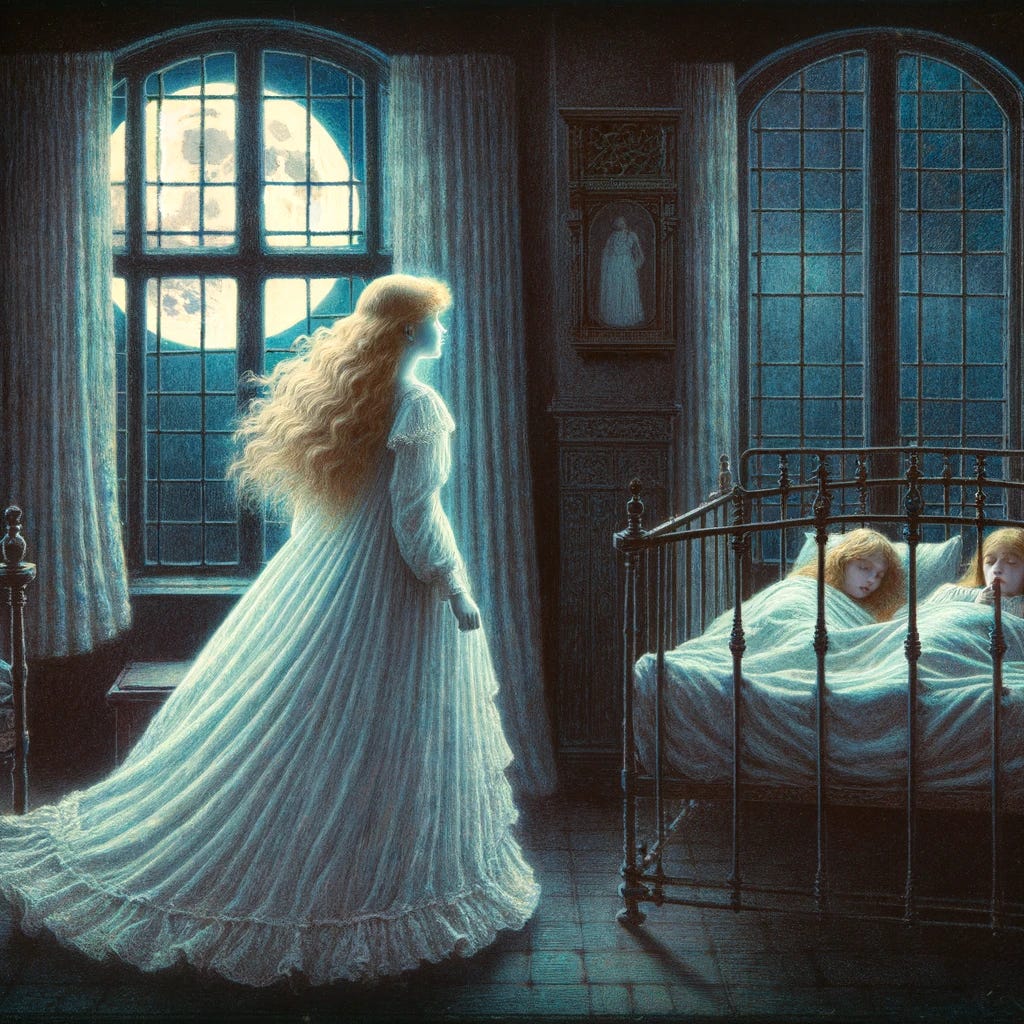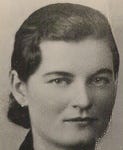Ghosts of the Past
Because my connection to ghost stories goes beyond being a native of Transylvania
Right after I vowed to write more often, I landed an unexpected consultancy contract with the city of New York, through my small business that has nothing to do with creative writing. As rewarding as this fortuitous, if deeply honoring, turn of events might be, I try to avoid spending more hours with my eyes on a screen. Yet, a lot of stories are starting to request their freedom, and I kinda promised my dad that I would write this family story sooner rather than later.
During my childhood, my paternal grandmother would recount a ghost story that I never grew tired of hearing. Sometimes, my father would attempt to challenge her claims, suggesting that perhaps it was all a dream. Now when I recall the account, I can attest that no dream, however memorable, could ever make such a lasting impression on someone as I could feel was made on my grandma, while enraptured by her story. Her belief in ghosts was unshakable, as strong as her Greek-Catholic faith, her compassion for the needy, and her forceful will that kept the family close for most of her life.
The second daughter of one of the wealthiest landowners around - a short, dark-skinned man whose temper was too often worsened by alcohol - my grandma’s first memories would be tinged with terror. As fate would have it, she was born with honey-colored hair, sky-blue eyes, and a milky complexion. Out of the four sisters and three brothers, she was the one who looked most like her mother. This was no argument for the liquor-addled brain of her father, whose rage would send her too many times running to the nearby village, barefoot, in the dark, in all weather, seeking refuge in her grandma’s home.
“Bastard! You are no child of mine!” he would yell, while barely keeping his balance.
This couldn’t go on. Her grandma’s Székely roots helped place the traumatized little girl in the care of the child’s godmother - a Hungarian countess whose family owned the most imposing estate in the area, with a mansion not unlike many you can encounter nowadays in Normandy.
Countess Ida - “the old godmother”, as grandma referred to her, or keresztonya (“godmother” in Hungarian, as she would address her), whose ancestry was traced back to King Árpád of Hungary, established residence there sometime before The Great War (when Transylvania wasn't yet part of Romania), to keep as much distance as possible from her philandering husband, Count György, who stayed back in Budapest.
She was joined by her youngest daughter, Countess Ilona, or Ili, who was a spinster, and whom Grandma would address as kissaszony (“Miss”).
Ili grew fond of the frightened and shy but well-behaved Romanian little girl and set out to offer her the education of a lady. She taught her literary Hungarian, good manners, everything she learned in finishing school, all the while instructing her cook, who was a graduate of a Budapestan housekeeping school, to teach her everything a housewife should know. Decades later, Grandma would often correct my posture, telling me how she had to learn to walk with a book on her head and a broom tied to her back.
Mansion interior painted by Countess Ili
The manor was guarded by ten German shepherds whom Ida loved to paint - both countesses were passionate watercolorists. Their groundskeeper raised an assortment of birds, among which geese that the cook force-fed to fatten their liver, and guinea fowl, which grandma adored. During summers, she would lie down on the grass, and the guinea fowl would approach and sit on her body, much to her delight.
The mansion’s rose garden - watercolor by Countess Ili
The mansion had been all but abandoned after tragedy struck the family who owned it. In the back of the garden, among rose bushes, horse chestnut trees, and weeping willows, was the grave of a fourteen-year-old girl, the daughter of the former landlord, a wealthy Jewish merchant. The story that went around was that she ended her life after her father forbade her from seeing the Romanian mayor’s son, with whom she was in love. There were rumors that the mansion was haunted.
My grandma’s younger sister, Aunt Leona, whose left hand had been mangled by polio, would often visit for sleepovers. One night, while her sister was fast asleep, Grandma felt an unusual light in the room. She opened her eyes and what she saw stunned her: a luminous, angelic girl, with long, blond, wavy hair, dressed in what looked like a white wedding gown, was staring at her. She closed her eyes again, petrified by fear, and made the sign of the cross with the tongue inside her closed mouth, too scared to even breathe. Then curiosity got the best of her, so she opened her eyes again. The girl was now near her sister’s cot, touching her paralyzed hand. “Violet, cut it out, goddam you! Leave my hand alone, you fiend!” her sister cursed half asleep, without opening her eyes, thinking it was my grandma tormenting her. At that moment, the ghost backed off and vanished through the bars of the window.
Illustration generated by Open AI
When Grandma told the countesses what she saw, they looked at each other and told their story: yes, they sometimes saw the girl too, roaming the mansion hallways, and other times they would also see an unknown gentleman dressed in a bygone-era costume, sitting in the lobby, as if waiting to visit. By the time they descended the stairs to greet him, the chair would be empty.
“But grandma, what if the ghost wanted to heal Aunt Leona?” I asked one of the first times I heard the story. I was convinced that if Aunt Leona hadn’t cursed so blasphemously, the ghost would have performed a miracle. “Oh well, sweetie, I guess we will never know,” Grandma said, smiling, while her eyes filled with nostalgia.
Unlike other manor houses in the region, the haunted mansion where my grandma lived doesn’t exist anymore. It was plundered and dismantled brick by brick after Countess Ili was forced to move back to Budapest at the end of WWII, by the new regime (her mother died of a stroke in 1937). All that is left is the watercolor that Countess Ida painted, among a few other heirlooms that were part of my grandma’s dowery, and her stories, which I am just starting to write.
Grandma Violet








